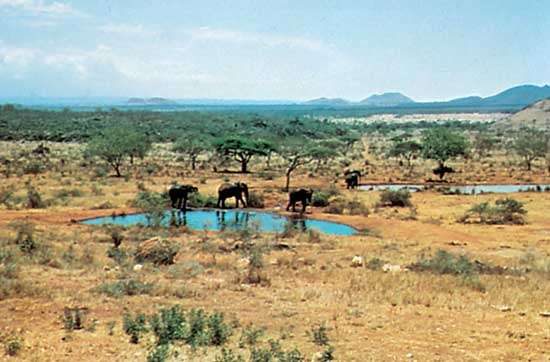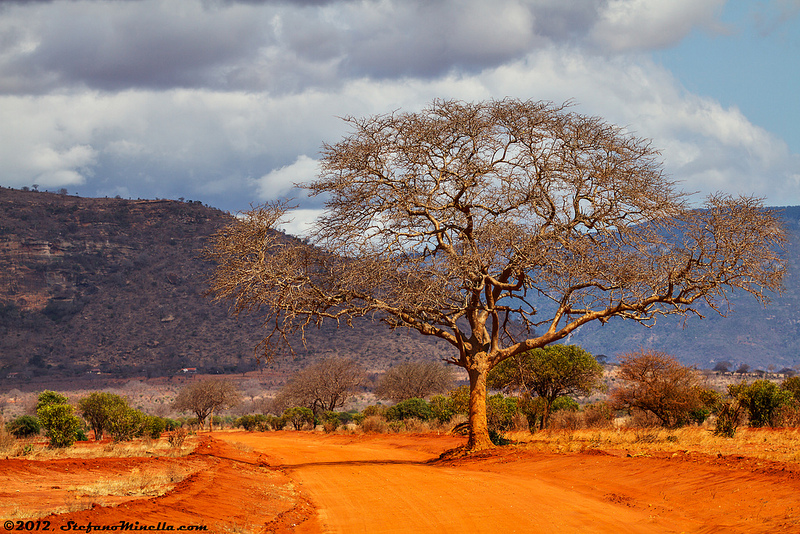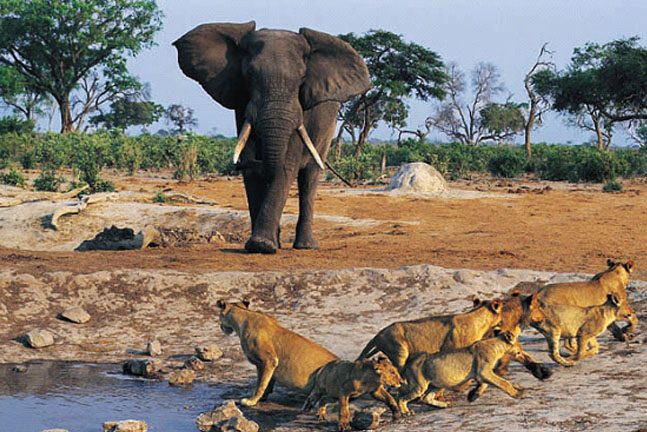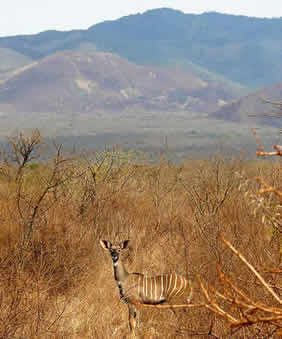History Of Tsavo National Park In Kenya
Long before the creation of Tsavo Park, a few explorers had hazarded to get to the locality. Two German missionaries, Rebmann and Krapf, were the earliest Europeans to see Mts. Kenya and Kilimanjaro in the 1880s. Some years after Lord Lugard discovered the Galena/Sabaki River, Joseph Thompson arrived and befriended the Maasai and narrated the wasteland to everyone.
Human-eating lions

The largely unexplored area in the early days was a tangle of dense undergrowth in an arid semi-desert Source: Britannica
The largely unexplored area in the early days was a tangle of dense undergrowth in an arid semi-desert. Lions had man-eating tendencies. In 1898, two maneless male lions terrorized the area where the Kenya-Uganda railway construction was going on. The lions used to drag the workers from their tents, despite the traps, ambushes and thorn fences built to keep them out. The man-eating lions devoured 135 rail workers. It only came to an end when Lt. Colonel John Henry Patterson who was overseeing the laying of the tracks, finally shot the lions.
Untouched and inhospitable
Tsavo was home not only to man-eating lions but also to thousands of black rhinos and a multitude of venomous snakes, scorpions and stinging insects, not to mention the threat of deadly malaria. The elephants there were unfriendly because of many years of poaching and hunting. Buffaloes were extremely dangerous when stumbled upon. Bird eating spiders leaped up at one if disturbed. But today the untouched and inhospitable Tsavo is transformed into a famous national park.
Kenya national parks
It was in the 1930’s that the concept of the park to preserve Kenya’s irreplaceable wildlife heritage came into being. But the war years put it on hold. Later on, the first national parks director Colonel Mervyn Cowie took up the mantle in 1939 when the war was over. Chief Game Warden Archie Ritchie contributed most to the national parks’ success, which is the world’s finest. He insisted that national parks should be separate from the Government. He made sure that the affairs of the parks never interfered with political manipulation. Finally, a board of trustees with people from all walks of life oversaw it. Perhaps the two who created Kenya’s national parks is Colonel Cowie and Archie Ritchie.
First assistant wardens
The park administration hired Peter Jenkins and Bill Woodley, who were 18 and 19 respectively, as the first Assistant Wardens after the Park gazettement of 1948. They had just finished schooling at the Prince of Wales in Nairobi. By today’s standards, their salary was meager with no allowances. The two of them served initially in Nairobi National Park under Ken Beaton, its Warden.
Jenkins and Woodley
On the 19th of April 1948, Peter Jenkins and Bill Woodley were on their way to Tsavo National Park to work under its first Warden named Stevens. He had erected a rustic base camp at Steve’s Hill in Tsavo West National Park. Stevens had no previous experience of camping or wildlife. He lived in an old tent into which a lion would walk in, which was too primitive a condition for him. Needless to say, before long Stevens threw in the towel, leaving Billy Woodley and Peter Jenkins and their handful of raw laborers in limbo. Ken Beaton arrived to fight the fire. His arrival coincided with the employment of yet another pioneer warden.
Major David Sheldrick
Archie Ritchie himself specifically headhunted David Sheldrick for the Tsavo task. David Sheldrick had served with distinction in Burma and Abyssinia. At the time that the job of Tsavo warden came up, David was engaged in taking the Aga Khan to Dar es Salaam. Ritchie persuaded Cowie to wait for David’s return before advertising the post for the warden of Tsavo, knowing that David would be perfect for the position.
East and West
Following discussions with the board of trustees and various district commissioners, Ken Beaton recommended the division of the giant Tsavo National Park into two smaller units, Tsavo East and Tsavo West, for ease of administration. David Sheldrick’s responsibility was to develop the problematical section east of the railway, now known as Tsavo East. Bill Woodley joined him as Junior Assistant Warden. Eventually, Peter Jenkins was transferred to work under David Sheldrick in East Tsavo.
Pioneer park wardens
The credit of converting the unchartered terrain that Tsavo was to a famous wildlife tourist park goes to Kenya’s first generation of wardens, David Sheldrick, Peter Jenkins and Bill Woodley. They were proficient riflemen capable of shooting an elephant, rhino, lion or buffalo the moment they could walk. They had been active and served during the Second World War. The first task of the early pioneer park wardens, Sheldrick, Jenkins, and Woodley, was to walk on foot in punishing temperatures of the dry season. They carried with them what water they could. But during wet seasons, they ventured further, for they were hardened naturalists, and drank from waterholes that were used by the animals as well. They used natural roots and alum to remove these waterholes of mud and animal feces.
Danger and hardship
There were no proper roads for Tsavo’s pioneers to follow except for some narrow elephant trails that wound through Commiphora dominated thicket. The wardens followed these trails in the intense and sweltering heat that seemed bent on draining every morsel of moisture from the human bodies. There were no aircraft from which one can monitor the challenges ahead and no hand-held radios to contact one another. All the three men had at their disposal was a vehicle and some old tents that did not zip shut. Their workforce was a handful of raw laborers with only pangas and shovels to carve out the tracks.
Fast forward today
Today’s wildlife personnel have no perception of the toil and sweat of their predecessors. These brave people created a national park of which the country could be proud. Their visionary work and tireless efforts are worth remembering.
5 Frequently Asked Questions About Tsavo National Park
To book a safari in Tsavo, please fill out the following form or simply email us on safaris@safari-center.com







